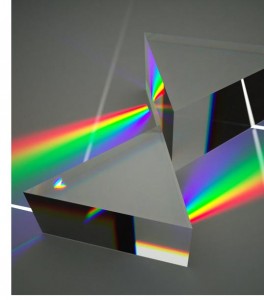THURSDAY, 24 MARCH 2011
 Maxwell’s equation of electromagnetism, which was the first step towards unifying the concept of light with the laws of electricity and magnetism, laid the foundation for our understanding of electromagnetic radiation. His discovery made possible much of modern technology, such as mobile phones, computers and electric light. Scientists today are still creating wonders that exploit Maxwell’s laws. Ulf Leonhardt and his group at the University of St Andrews have recently acknowledged the physicist's contribution to their experiments in 'perfect imaging’ [1].
Maxwell’s equation of electromagnetism, which was the first step towards unifying the concept of light with the laws of electricity and magnetism, laid the foundation for our understanding of electromagnetic radiation. His discovery made possible much of modern technology, such as mobile phones, computers and electric light. Scientists today are still creating wonders that exploit Maxwell’s laws. Ulf Leonhardt and his group at the University of St Andrews have recently acknowledged the physicist's contribution to their experiments in 'perfect imaging’ [1].Maxwell proposed a 'fish-eye' lens that would, in theory, give perfect resolution because of its ability to image details finer than the wavelength of light [2]. Light would travel around this spherical lens as if it were restricted to a path on the surface of the lens, and focus perfectly on the opposite side. This type of lens was believed for many years to be impossible due to the wave nature of light, which would limit the possible resolution. However, Leonhardt's group demonstrated perfect imaging with microwaves using a two-dimensional fish-eye lens constructed from nano-scale metamaterials. These metamaterials are composed of tiny metal wires or rings that have a smaller diameter than the wavelength of light and therefore exhibit different electromagnetic properties.
This technology has implications not only in imaging techniques, but also in the potential for electromagnetic cloaking devices. In fact, a prototype has already been developed that makes a coin-sized object invisible to microwaves of a certain polarisation and frequency [3].
Written by Stephanie Boardman
References:
- Leonhardt, U. (2011). To invisibility and beyond. Nature, 471(7338), 292-293. doi:
- Ma, Y.G., Sahebdivan, S., Ong, C.K., Tyc, T. & Leonhardt (2011). Evidence for subwavelength imaging with positive refraction. New J. Phys. 13 (033016) doi: 10.1088/1367-2630/13/3/033016
- Schurig, D., Mock, J.J., Justice, B.J., Cummer, S.A., Pendry, J.B., Starr, A.F., & Smith D.R. (2006) Metamaterial electromagnetic cloak at microwave frequencies. Science 314 (5801):977-80. doi: 10.1126/science.1133628
